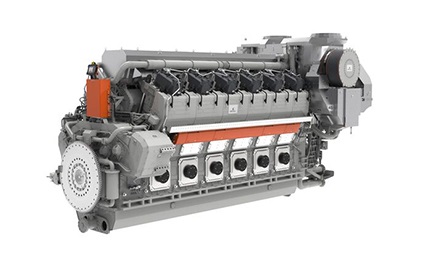Vehicle Parts Shop Offering Engines for Africa: Your Resource for High Quality Vehicle Elements
Vehicle Parts Shop Offering Engines for Africa: Your Resource for High Quality Vehicle Elements
Blog Article
The Mission for Ultimate Driving Power: Examining the Peak of Engine Efficiency and Technological Advancements in the Automotive Market
In the realm of automobile design, the search of optimum driving power has actually been an unrelenting pursuit that has actually unfolded via the advancement of engine design and the combination of cutting-edge technologies. From the thorough workmanship of combustion engines to the quick advancements in electrical propulsion systems, the automobile industry stands at the cusp of a brand-new era defined by extraordinary performance abilities.
Advancement of Engine Layout

Moreover, the integration of turbocharging and turbo charging technologies has changed engine style by improving power without substantially increasing engine size. These forced induction systems compress the intake air, enabling more fuel to be ignited, thus producing greater power outcome from a smaller engine. This development has been particularly important in enhancing the efficiency of smaller sized displacement engines while maintaining fuel effectiveness standards.

Performance-Enhancing Gas Technologies
The application of advanced fuel innovations has substantially contributed to enhancing engine efficiency in modern-day lorries. Biofuels, acquired from renewable sources like sugarcane, algae, or corn, offer improved and lowered exhausts engine efficiency. In addition, fuel additives and detergents are being created to tidy engine parts, optimize burning, and reduce friction, thereby enhancing overall car performance.
Improvements in Electric Propulsion
Considerable strides in electric propulsion innovation have transformed the automobile market, leading the way for a new period of lasting and efficient transportation. Electric automobiles (EVs) are gaining appeal due to their ecological benefits and improvements in battery technology, making it possible for longer driving arrays and shorter billing times. Producers are spending heavily in r & d to improve the efficiency of electric propulsion systems, concentrating on boosting power result, boosting power performance, and minimizing total weight.
One significant advancement in electrical propulsion is the growth of advanced electric motors that supply greater torque and power density, resulting in improved velocity and general driving efficiency. Additionally, regenerative stopping systems have been fine-tuned to capture and save energy during slowdown, additional enhancing the performance of EVs.
Moreover, the integration of wise technologies, such as expert system and anticipating analytics, is optimizing the management of electric propulsion systems, ensuring ideal performance under different driving conditions. These advancements in electric propulsion are reshaping the vehicle landscape, driving the market in the direction of a much more lasting and energized future.
Effect of Computational Liquid Dynamics
With innovations in electric propulsion pushing the limits of automotive modern technology, the assimilation of Computational Fluid Characteristics is playing a critical role in maximizing wind resistant efficiency and boosting total effectiveness in automobile layout. Computational Liquid Characteristics (CFD) involves making use of computer system simulations to evaluate the circulation of air around a vehicle, making it possible for designers to anticipate exactly how layout adjustments will impact aerodynamics without the demand for expensive physical prototypes. By precisely modeling air movement patterns, CFD permits the improvement of lorry forms to decrease drag, enhance cooling, and enhance security.
CFD enables engineers to optimize air movement around parts such as radiators, engine bays, and wheel wells, contributing to improved efficiency and general driving experience. In conclusion, the integration of Computational Fluid Dynamics represents a significant action ahead in the mission for ultimate driving power and performance in the automotive market.
Future Fads in Engine Technology
In the dynamic landscape of automobile design, Clicking Here innovative developments are forming the future trajectory of engine advancement. The future of engine layout is marked by a solid focus on efficiency, efficiency, and sustainability. Suppliers are progressively focusing on creating engines that not just deliver high power outputs but also focus on ecological responsibility by improving and minimizing discharges gas efficiency.
One noticeable pattern in engine advancement is the increase of electrification. Crossbreed and electric powertrains are acquiring traction as feasible options to typical combustion engines. These innovations supply the possibility for considerable decreases in carbon emissions and boosted energy efficiency, aligning with global initiatives to combat environment change.
Moreover, innovations in products scientific research and manufacturing methods are enabling the manufacturing of lighter and more resilient engine parts. This change in the direction of lightweight materials such as carbon fiber and aluminum alloys adds to enhanced performance and fuel economic climate.
Final Thought
Finally, the search of supreme driving power in the automotive sector remains to drive advancements in engine style, gas technologies, electrical propulsion, and computational fluid characteristics. The evolution of these innovations is forming the future of engine advancement, leading the method for extra reliable and effective lorries (engines for africa). As the industry continues to press the boundaries of what is feasible, we can expect to see also more cutting-edge developments in the pursuit for peak performance
One of the crucial landmarks in engine design advancement is the transition from blog here traditional carbureted engines to modern fuel-injected systems. By exactly metering the fuel shipment to each cyndrical tube, fuel-injected engines enhance combustion, resulting in better performance and reduced ecological effect.
Moreover, the assimilation of turbocharging and turbo charging technologies has actually revolutionized engine design by boosting power without considerably enhancing engine dimension (engines for africa).The execution of sophisticated fuel technologies has substantially contributed to enhancing engine efficiency in modern lorries. In addition, fuel additives and cleaning agents are being developed redirected here to clean engine parts, maximize burning, and minimize rubbing, therefore increasing total automobile efficiency
Report this page